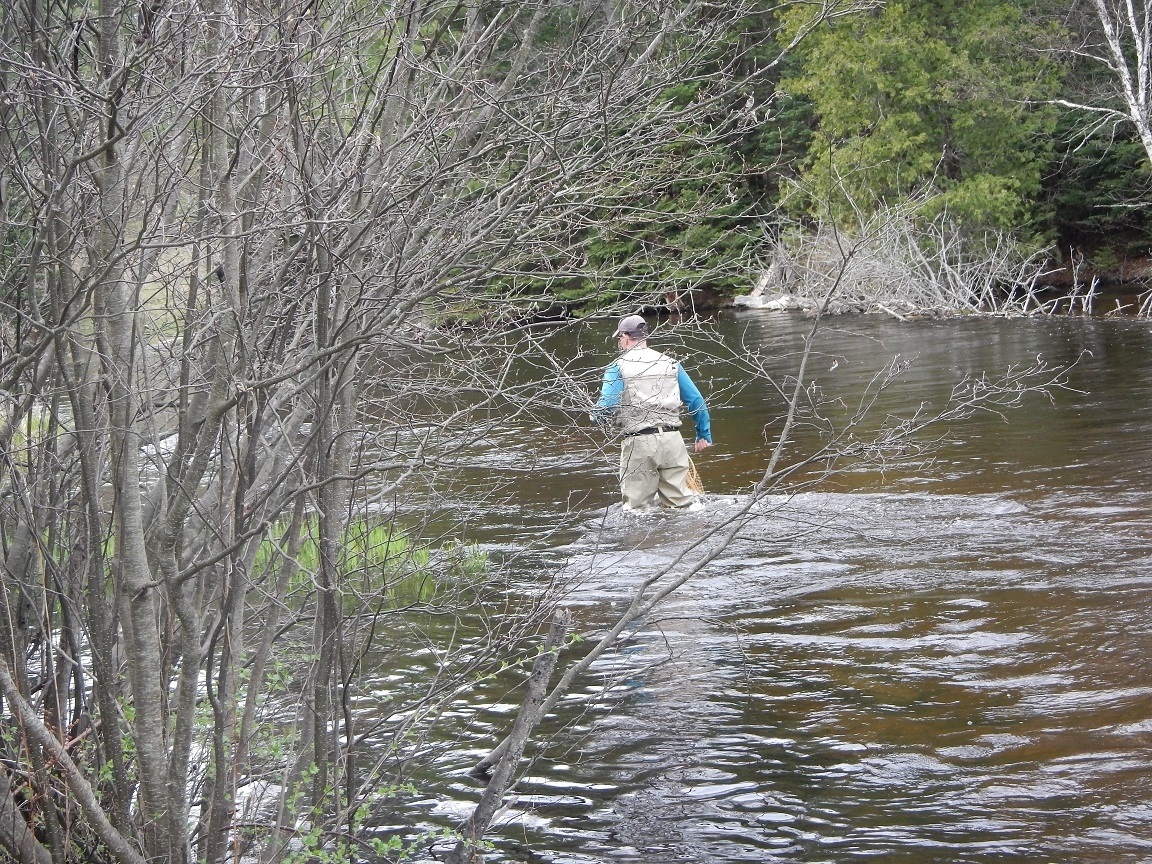
Too often people are discouraged by how complicated they think something is. Fly fishing is a common subject for this trap. While it can seem overwhelming wtihout a mentor, that doesn't mean you can't grasp some basics and get ont he water to see what works for you. Here's where to start.
About 10 years ago in northern Michigan, my friend and I were at a media event when the host asked if we’d like to float the Au Sable for some evening trout fishing.
Of course, we agreed. Fishing on a beautiful river? Who could pass up that opportunity? Gary and I left early for Grayling, home of Trout Unlimited, to rumble around in the fly shops. We grabbed a pie and brew at Bear’s Den Pizza and enjoyed the Fred Bear memorabilia. Our guide met us at the prearranged spot and we hit the water, which was flowing gently and beautifully in the late afternoon sun.
He strung the fly rods and tied on a couple of dries, and began rowing. Our casts were not entirely terrible, which may be a generous assessment, nor spectacularly beautiful. Fortunately, the distance to the targets was short. Our casts did not have to be long, nor pinpoint perfect. There was no wind. We dribbled a few, laughed, caught a few small trout, talked, drifted silently, and had a great time.
Gary is more of a fly angler than I am. His Kentucky homestate waters lend themselves more to wading, with smallmouth a favored target. My homestate waters offer strains of largemouth bass and panfish. Neither of us are diehards, nor do we turn up a snobby nose. We’re middle of the road, more or less, with more practice required to get better yet lack of commitment to do so. Neither of us mind. It is what it is, and we occasionally meet to wade, cast, flail, catch and enjoy.

Rod, Reel, Line, Fly
That’s what fly fishing should be about, in my opinion — the enjoyment. Getting started isn’t difficult, either. It may be a bit confusing, or sound confusing when you think of everything at once, but it’s not. Here’s a quick rundown:
— Fly rods typically are 3- or 4-piece, with cork handles and designations for weight and length. My all-around is a 9-foot, 8-weight rod. I can use that for bass or trout, or toss dries for bluegills. It throws into the wind, should I need it, but maybe isn’t best for creeks with overhanging brush. At that point, I’d downsize to something shorter and less weight (or I’d practice more to make shorter, tighter casts). They’re graphite, light yet tough, and a good one feels like an extension of your arm during a cast.
— Fly reels have a drag system, usually cork, to slow down a surging fish. The rest of the reel is basically a line-holder. Some are pretty, some are expensive, some are Plain Jane that get the job done. If you spend more for a reel, you’ll typically have a better, smoother drag system.
— Fly line is the usually colorful line you might see in magazine ads or television shows. It may be a “weight forward” line, which helps with casting, or a sinking line, which gets flies deeper. It may be neither, or it may have other characteristics. Fly line is the expensive part but can last for years if cared for appropriately. On the reel, the line is attached to inexpensive backing, because you don’t need an entire reel full of fly line. The backing goes on first, then the fly line. At the end of it, you attach a clear, monofilament leader. To that, you might attach at tippet, which is a smaller weight line that helps your fly look dainty and alone floating on or under the surface.
To me, the line is the most confusing thing. Do I need a weight-forward line for bass fishing in a wadable creek? No. I don’t need to drive a fly hard on a cast. Might I need it on the south Texas flats casting for redfish or specked trout? Yes, because there it seems the damned wind begins blowing about 9 a.m. and doesn’t quit until Toddy Time. Figuring out the kind of fishing you will be doing helps determine the line, leader and tippet.
— The flies are like any other fishing lure, as you’ll select what you (1) need for your fishing and (2) want, because you think you need it. An example: for panfish, you probably could do just fine with some black, white and olive woolly boogers, topwater poppers, red San Juan Worms, and maybe some Royal Coachman dry flies. A few different sizes in each, and you should be good to go. For bass, you’d want something bigger and meatier to mimic shad, alewife or crayfish. For saltwater inshore, you’ll need flashy streamers and crab imitators.
— Casting? Can’t help you there, chief, other than keep the wrist straight, work it 10-to-2 and don’t try to be that guy in the River Runs movie. Practice, practice, practice … in the yard, with a rod that has yarn tied on the end, on the water to a target, on calm days and windy days. If you’re going to be a good fly fisherman you have to to practice.
There. Easy, right?
Where to Look?
To get started fly fishing, you can dive into the YouTube rabbit holes and go the DIY route while maybe easing into some of the online fly chat sites. That’s not an impossible task, but it’s surely frustrating to begin a new activity and flail around with no one to answer questions or offer advice.
Here is my best advice: go on the Googs and search for fly fishing clubs and shops in your area. If you’re lucky, you’ll have a local fly shop and not a Big Box Store that has a few pegs of tippet and mass-production flies. Local fly shops can be helpful. They will know the area, or should, and offer solid advice on flies, gear and casting.
My local shop almost 30 years ago was a fishing-fly-archery hybrid with two knowledgeable guys who I enjoyed visiting and learning from. They gave me hell with my casting and dumb mistakes, but in a laughing way. I gave it back. I still recall the lessons for casting, and shooting my compound bow. Local fly shops with knowledgeable people are great resources. If you have a local shop but they’re selling sunglasses, clothes and The Brand but don’t know a Clouser from a closet hanger, run away.
Along with the shops, search for a fly fishing club in your area. If it is affiliated with Trout Unlimited or Fly Fishers International, even better. Those non-profit organizations help anglers with education, conservation and more. You can find local affiliated clubs, where you can visit or join and meet new anglers, learn and, should you be interested, contribute in some way. I’m fortunate that my local club has a good membership base with helpful folks. It has fly-tying nights, swap meets, conservation projects and speakers who discuss everything from biology to travel tips.
Once you get into fly fishing, you’ll get frustrated and experience some cool moments. You’ll catch fish and break off line in tree limbs you didn’t see. You’ll fall in a creek and learn about wading sticks, shuffling feet and packing extra clothes. And you’ll float, eventually, on a river with a good friend and guide watching a sunset and catching a few small trout with casts that need more practice but get the job done.
Dive in. You’ll get hooked.

Article by Alan Clemons
Article photos by Gary Garth
Header photo by Trent Marsh



